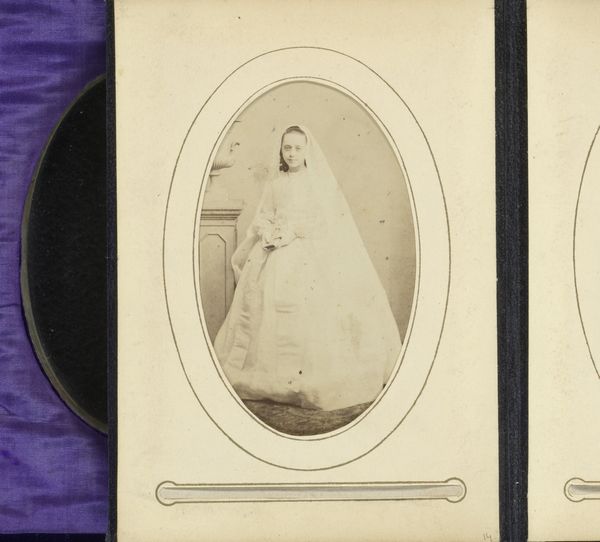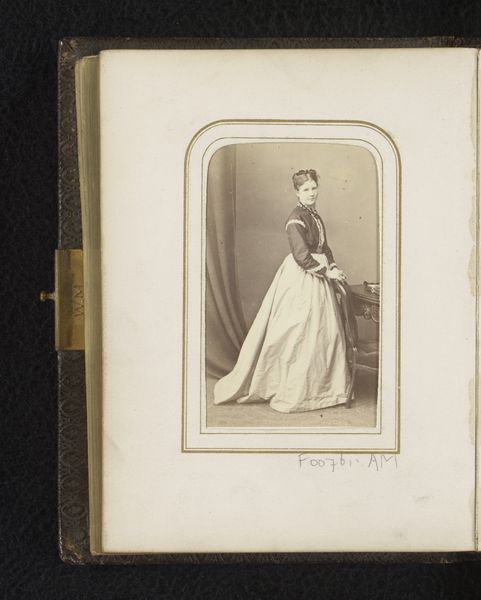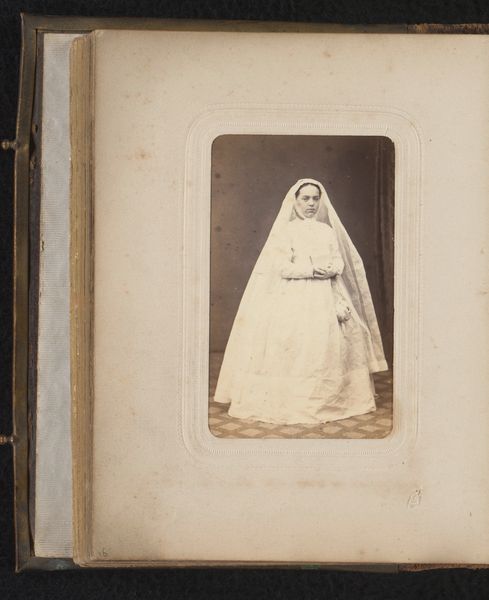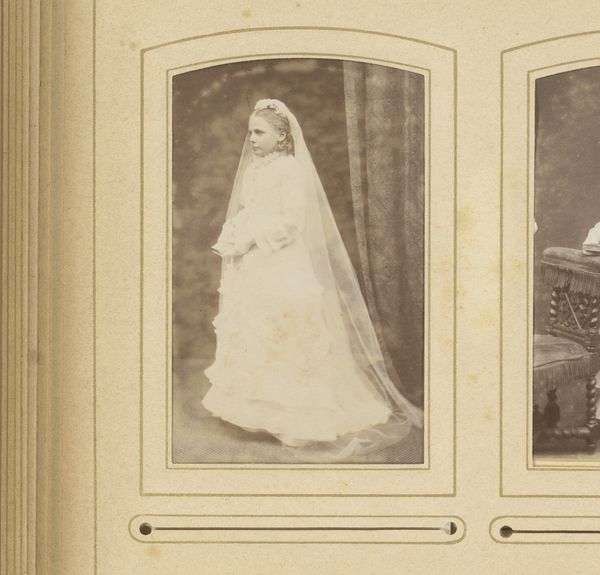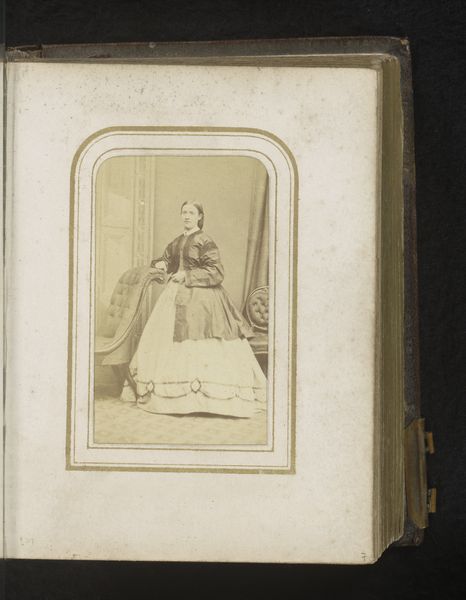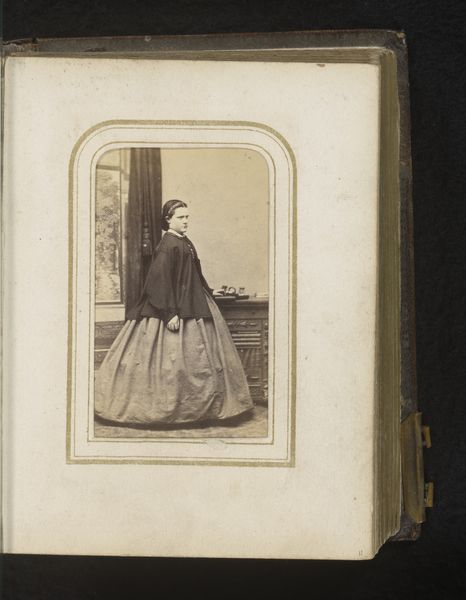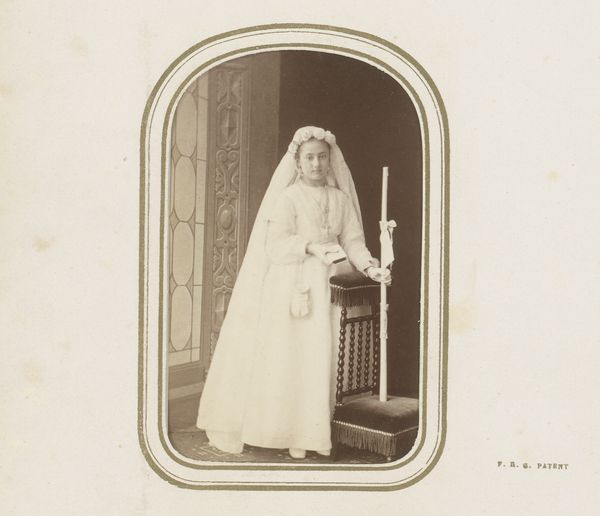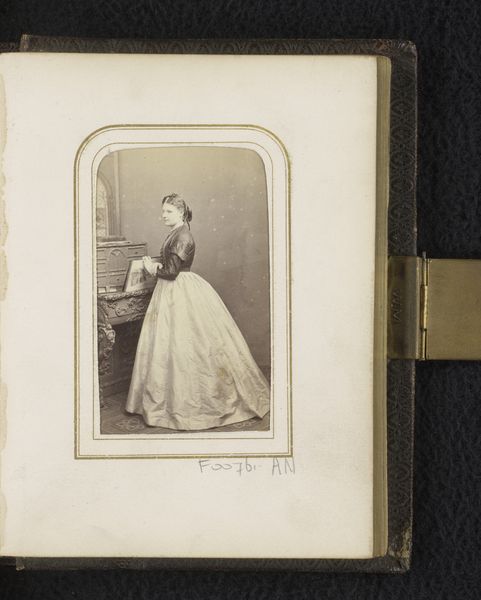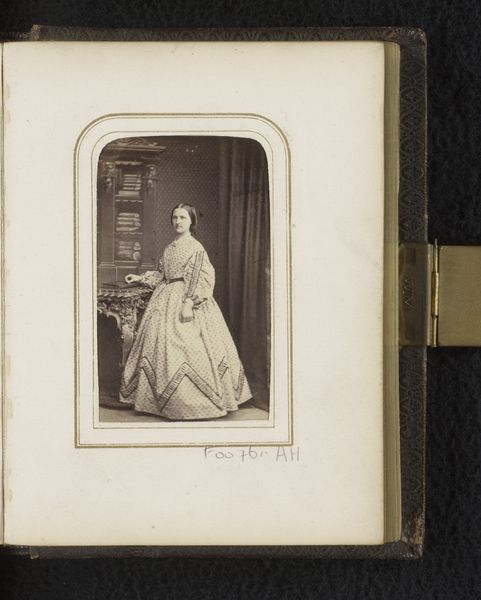
photography, gelatin-silver-print
#
portrait
#
photography
#
gelatin-silver-print
#
realism
Dimensions: height 105 mm, width 64 mm
Copyright: Rijks Museum: Open Domain
Editor: So, this is P. Frois's "Portrait of a Standing Girl in a Communion Dress," taken sometime between 1873 and 1874, using gelatin silver print photography. The textures of the dress are so crisp. What strikes you most about this image? Curator: For me, it’s the stark contrast between the delicate dress, clearly a product of meticulous labor, and the seemingly effortless technology of the photographic process used to capture it. The gelatin-silver print, as a mass-reproducible medium, democratizes access to portraiture but simultaneously obscures the human labor embedded within that dress. Editor: That’s a fascinating point. It’s easy to overlook the craft in the dress when we are presented with it as a photograph. The production value gets lost in translation. Curator: Precisely. Think about the material sourcing, the spinning of the yarn, the weaving or knitting, and the actual sewing – all unseen. The photograph flattens those processes into a single, seemingly instantaneous moment. How does this impact our understanding of the subject, this young girl? Is she elevated by this technological and sartorial presentation, or objectified by it? Editor: I hadn’t considered that tension before. So, we have on one hand a complex production of materials but a simple capture method for image making. Curator: Exactly. It raises questions about the commodification of both the girl’s image and the garments themselves. The value isn’t simply in the artistry of the dress, but also in its potential for circulation as a signifier of status and piety made widely accessible through this very photographic medium. The original probably cost quite a lot! Editor: It really changes how I see photography of the time, and its connection to consumer culture. It isn’t just a snapshot, but another industrial way of distributing the wealth gap in plain sight! Curator: Yes! It is precisely in examining these production chains, these material entanglements, that we begin to understand the photograph’s role in shaping and reflecting Victorian society's values and consumerism.
Comments
No comments
Be the first to comment and join the conversation on the ultimate creative platform.

